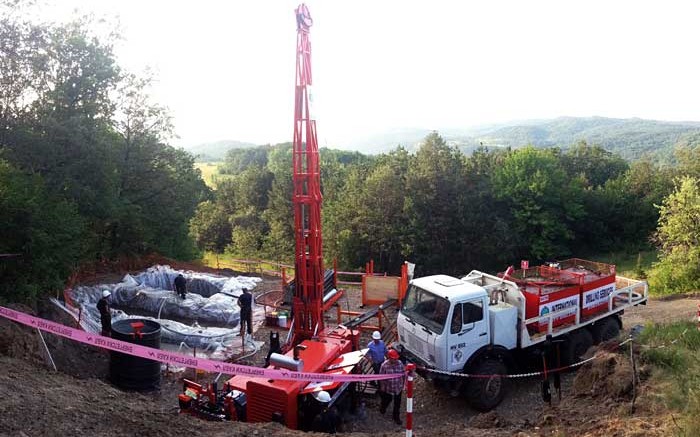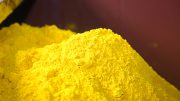After two years of pain for resource stock investors, there is a little bit of relief in sight. Gold has moved almost 20% off its late June low, and trading volumes and interest in resource explorers have increased. That’s good, but the market has a long way to go before I would consider it “healthy.” I believe we will see higher precious metal prices, but there could still be nasty dips along the way.
The biggest near-term issue is “tapering” by the U.S. Federal Reserve Board. I’m not a hardcore gold bug, and not of the opinion that monthly bond purchases by the Fed (quantitative easing, as it’s commonly known) will go on forever. I think the Fed will start cutting back on bond purchases, and probably soon.
Traders’ opinions on the timing and severity of the cuts swing wildly every day. But based on bond yields, major equity market indexes in the U.S., and, yes, gold prices — I believe at least some of the impact of tapering has been priced in.
That said, there is a real chance of another price drop when the Fed formally announces a tapering decision. It could be a large drop if the first cutback in bond purchases is bigger than expected.
This helps explain continuing low trading volumes and level of financings, even with a recently rising gold price. I’m hoping a tapering decision, whatever its short-term effect on precious metals, could be seen as a final bottom that some traders will expect. If metals hold recent price levels and don’t revisit the June lows during the start of tapering, traders’ confidence levels will increase. That could help draw some money back to the sector, almost regardless of where gold and silver are trading at that point.
This adds up to a dangerous environment for resource speculators. Our newsletter Hard Rock Analyst (HRA) has tried to alleviate the risk to some extent by looking for cash-rich explorers (and a couple of third party-funded ones) that are testing or about to test high-potential targets.
HRA also has a number of companies on its list that are growing already discovered resources. Those have moved with gold prices and will keep rising if the metal does. High-potential explorers on the other hand can move higher even in flat or slightly downward metal markets, if exploration is successful. A good discovery has its own momentum. An early stage explorer can buck the market trend for a long time — as long as traders think new results are expanding the potential value of the find quickly enough.
These are not low-risk situations, but we’re in a market that is starved for news and discovery. A successful explorer will garner a lot of attention in this sort of environment. If you’re up for that sort of trade, what follows are a few suggestions.
I’ve focused on several companies in the newsletter that are testing or about to test “virgin” targets, and that have the backing or the funds on hand to survive failure and move on to new targets if need be. One of these companies — Colorado Resources (TSXV: CXO) — has already made a discovery at its North ROK project since coverage was initiated. Traders were disappointed with the grades in the last set of results. While that generated a price drop for the stock, it doesn’t negate the underlying speculative thesis. Colorado was trading at 15¢ (below the value of its bank account) when it was introduced to HRA readers. The stock rose as much as 900% post-discovery, and HRA recommended taking enough money off the table to cover entry costs. It’s currently trading at three times its pre-discovery level backed by 20¢ per share in cash, and continues to test the targets at North ROK. It’s still a good speculation and proof of concept. Several other companies HRA is following are earlier in the exploration process and will deliver results during the next couple of months. A few of them are outlined below.
Mirasol Resources (TSXV: MRZ; US-OTC: MRZLF) is already a successful explorer. Coverage was initiated before Mirasol made its high-grade silver discoveries at the Joaquin and Virginia projects in Argentina. Coeur Mining (TSX: CDM; NYSE: CDE) optioned Joaquin and bought the project outright from Mirasol. This has left MRZ with a strong working capital position of over $40 million (more than $1 per share) in cash and Coeur stock.
Recent political events in Argentina have made it something of an investment pariah. Mirasol has several good projects there, including Virginia, but has focused on Chile until the political issues in Argentina are resolved. Mirasol has just completed a maiden drill program at the Titan project in Chile, and has been trenching the nearby Atlas project as well. Both of these properties contain big targets represented by large alteration systems, with coincident soil geochemistry, hard-rock geochemical anomalies and geophysical targets.
Mirasol believes the projects protect the upper levels of high-sulphidation mineralized systems. Trenching and drilling will test to see if the grade and continuity of the gold and silver mineralization improves at shallow depths. These are both good-looking targets with plenty of scale potential, and Mirasol has the funds to accelerate exploration if results are good — though the company may choose to joint venture the projects.
In either case, Mirasol is a junior with great management, a successful track record and the working capital to pursue new ideas without shareholder dilution. At a 30¢-per-share enterprise value, I believe downside risk is limited.
Mundoro Capital (TSX: MUN; TSXV: MUN; US-OTC: MUNMF) is completing a maiden drill program on one of several concessions it holds in Serbia that adjoin either the large Bor mine complex or projects held by the Reservoir Minerals (TSXV: RMC) and Freeport-McMoRan Copper & Gold (NYSE: FCX) joint-venture that announced an impressive discovery last year. HRA follows Reservoir as well, and I went looking for other companies with holdings in the area. Reservoir has a 45% joint-venture interest in Timok and has garnered a $180-million market value thanks to it. Mundoro holds several concessions covering similar geology next door and began a 4,000-metre drill program in late July to test similar geophysical and structural targets to Reservoir’s Timok discovery. These are totally blind targets being tested with 700-metre holes. It’s by no means low-risk exploration.
Mundoro does have a big ace in the hole, though: its bank account. The company had $13.2 million in cash and equivalents at the end of June. The junior is trading for cash value. In other words, there is no discovery premium. If Mundoro misses during its current drill program, there could be some selling, but the downside is limited by its strong balance sheet and the fact the company is also at work drilling other areas south of the Reservoir-Freeport project, and at another project in Bulgaria.
If Mundoro is fortunate enough to drill a hole that looks anything like the broad, high-grade intercepts Reservoir has reported next door, it would trade at a multiple of today’s price. This is as good a risk and reward scenario, as you’re likely to get in a weak market.
San Marco Resources (TSXV: SMN) is following a joint-venture model on two of its three main projects in northwest Mexico. I’m a big fan of this area, even though Mexico is much less on most traders’ radar screens now than it has been in the past. Mexico — Sonora state in particular — has been home to several new gold mines, and most of them are high-margin and low-capex operations, even though the head grade is low, in most cases. It’s a good place to find a mine.
Exeter Resources (TSX: XRC; NYSE-MKT: XRA) is earning into San Marco&rsqu
o;s Angeles and La Buena projects. Phase-one drilling has been completed at Angeles. While the results indicated a structurally controlled zone with strike and dip potential, the drill intercepts were not good enough to keep traders interested in a market like this. Crews have moved on to La Buena, and drilling is soon starting there. Exeter can earn a 60% interest in La Buena by spending $15 million over five years, with a firm commitment of $1.4 million in the first year.
The partners have undertaken an induced-polarization (IP) survey that has highlighted several new targets under pediment cover, but the main target of interest is still Julia, where the drill program will begin. Julia measures 800 by 1,200 metres based on coincident gold in soils, anomalous gold in rocks, IP chargeability and surface alteration. The area of the chargeability anomaly and alteration patterns is several times larger if we don’t limit it with geochemistry. It’s large enough to host a substantial resource.
Julia resembles the targets drilled to discover the resource at Goldcorp’s (TSX: G; NYSE: GG) nearby Penasquito mine. The target at Julia is a breccia pipe-stockwork zone similar to the Penasquito resource areas. There are several other targets that will be prioritized as Julia is drilled, and some of them will also receive drill testing. San Marco has earlier-stage projects, particularly Carlos, which is being moved to drill targeting stage. San Marco does not have a large cash balance, but its burn rate is low thanks to the joint ventures. With a $6-million market value, San Marco has room for large gains if drilling at La Buena is successful.
— Eric Coffin is the editor of the Hard Rock Analyst advisory newsletter. Visit www.hraadvisory.com for more information.





Be the first to comment on "Commentary: Reward potential still lives in ‘market wasteland’"